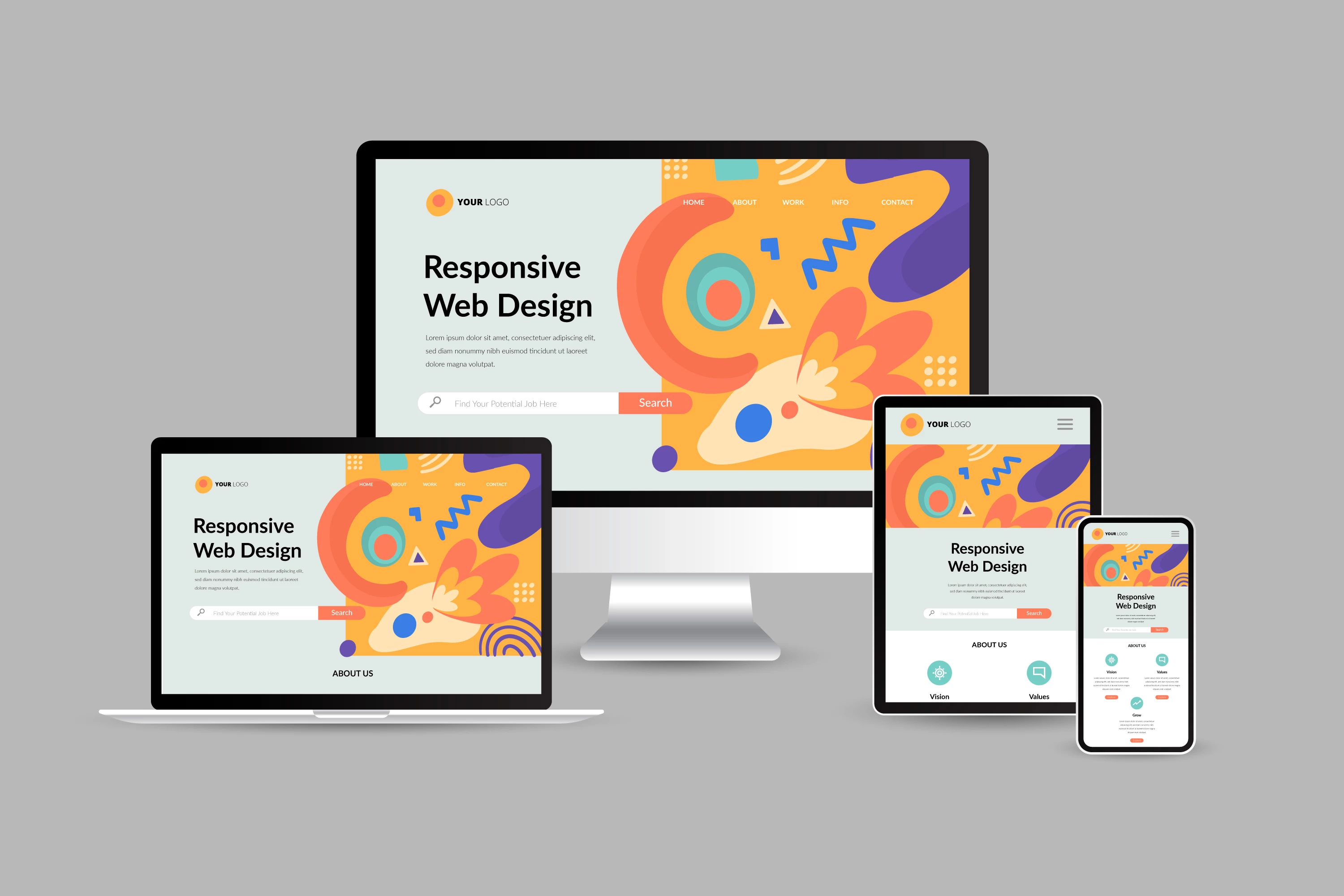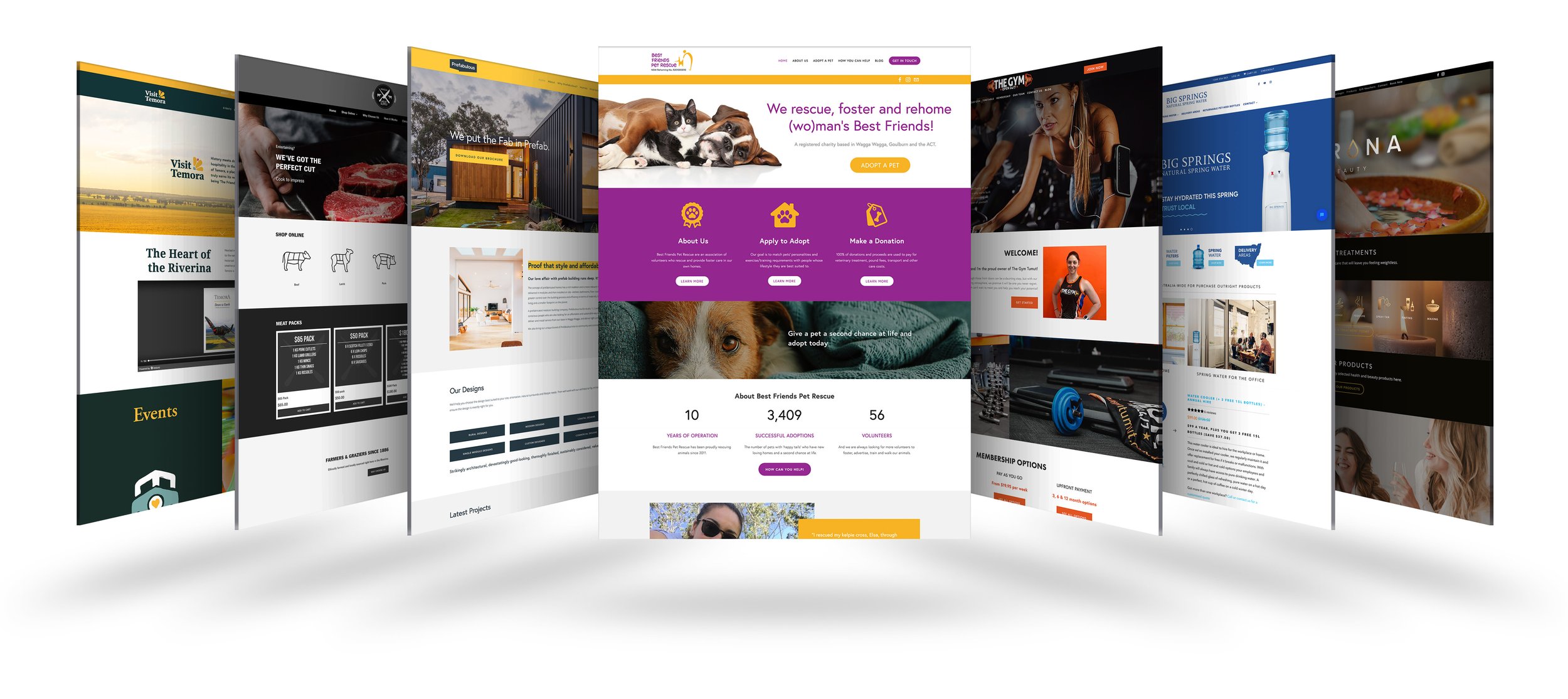Optimized Website Design Solutions for Enhanced User Interaction
Top Tips for Producing an Impactful Website Design That Converts
To attain this, one must take into consideration a selection of aspects, including recognizing the target audience, focusing on individual experience, and maximizing for mobile platforms. The critical use of compelling call-to-actions and a well-defined aesthetic hierarchy plays a crucial duty in assisting customers with their trip.

Understand Your Target Audience
Understanding your target market is basic to effective internet site style, as it lays the groundwork for creating an engaging individual experience. Identifying that your individuals are, including their demographics, choices, and habits, makes it possible for designers to customize the website's material, layout, and capability to fulfill details requirements.
Performing complete market research is important in this procedure. Studies, interviews, and analytics can give useful insights right into user assumptions and discomfort points. By compiling this information, designers can produce individual characters that represent different segments of the audience, ensuring that layout decisions are educated and relevant.
Moreover, understanding the target audience aids in selecting suitable layout elements such as color design, typography, and images that resonate with users. A web site that talks straight to its target market fosters a feeling of link and count on, motivating longer brows through and greater conversion prices.
Ultimately, a user-centered technique to site style not just boosts user contentment but likewise supports company purposes by driving engagement and loyalty. By prioritizing the demands and preferences of the target audience, a site can efficiently serve its function and attain wanted end results.
Prioritize Individual Experience
To boost the general performance of a web site, prioritizing customer experience (UX) is essential (Website Design). A well-designed UX ensures that site visitors can navigate the website easily, discover info promptly, and engage with material meaningfully. This leads to increased customer complete satisfaction and greater conversion prices
Begin by carrying out intuitive navigation. Menus should be logically structured, permitting users to find essential locations of the site with minimal effort. Consistency in layout aspects, such as shade schemes and font styles, cultivates experience, which is essential for maintaining user interaction.
In addition, consider the filling speed of your site. A delay of just a couple of seconds can lead to significant drop-offs, as customers are much less likely to wait for a slow-loading page. Enhancing pictures and optimizing code can improve efficiency and preserve visitors.
By prioritizing individual experience, you not just develop an extra enjoyable environment for site visitors but likewise reinforce your brand name's trustworthiness. Inevitably, an emphasis on UX is a financial investment in the lasting success of your website.
Maximize for Mobile Tools
Maximizing for mobile tools is crucial in today's electronic landscape, where a raising variety of customers accessibility web sites via smartphones and tablet computers. A mobile-friendly style not only boosts user experience yet also plays a substantial role in boosting search engine rankings. To accomplish this, it is necessary to embrace a responsive style that automatically gets used to different screen sizes and alignments.

Loading rate is one more essential aspect; mobile customers are normally less patient and expect rapid access to information. Enhance photos and utilize web browser caching to boost efficiency. Examination your site on numerous devices and screen resolutions to identify and rectify any type of potential usability issues. By prioritizing mobile optimization, you make certain that your site continues to be affordable and properly involves a wider target market.
Use Compelling Call-to-Actions
A site's effectiveness Get More Info typically rests on its capacity to guide site visitors toward desired activities, making engaging call-to-actions (CTAs) crucial elements of design. CTAs work as the critical points that guide individuals to involve with the site, whether that suggests buying, signing up for a newsletter, or downloading a resource.
To create effective CTAs, clarity is vital. Use concise language that clearly communicates the action you desire the customer to take. Expressions such as "Get going," "Subscribe Free," or "Shop Now" not just communicate seriousness yet likewise eliminate ambiguity. The placement of CTAs is equally essential; they need to be tactically placed throughout the web page to ensure they are quickly noticeable, particularly in high-traffic areas.
Furthermore, the design of CTAs ought to attract attention without being noticeable. Employ contrasting colors and clear typefaces to guarantee they record interest. Additionally, consider making use of directional signs, such as arrowheads or images, to lead customers toward these buttons. By concentrating on these aspects, companies can considerably improve individual engagement, driving conversions and eventually achieving their internet site's objectives.
Focus on Visual Pecking Order
Efficient internet site design counts heavily on a well-structured aesthetic power structure that overviews users with web content seamlessly. By arranging elements in a way that focuses on information, developers can boost customer experience and assist in decision-making. This entails utilizing dimension, shade, comparison, and spacing strategically to accentuate one of the most vital elements of a page.
The use of larger fonts for headings and subheadings establishes a clear difference in between various areas, enabling customers to check material easily. In addition, using different shades for buttons and calls-to-action can capture individual focus and urge communication. Whitespace is another vital element; it avoids clutter and allows individuals to concentrate on crucial messages without disturbances.
Images and graphics should complement the recommended you read message while additionally sticking to the well-known power structure, strengthening the total message (Website Design). Uniformity in design aspects, such as color pattern and typography, further strengthens the visual hierarchy, making navigation intuitive

Conclusion
To conclude, effective website style necessitates an extensive understanding of the target audience, prioritization of customer experience, and mobile optimization. The critical use engaging call-to-actions and a well-defined aesthetic pecking order even more improves customer interaction. By executing these principles, internet sites can attain greater conversion prices, ensuring that layout aspects not only draw in site visitors however also promote seamless navigation and interaction. Inevitably, a well-executed website layout offers as a vital part in driving customer actions and achieving service objectives.